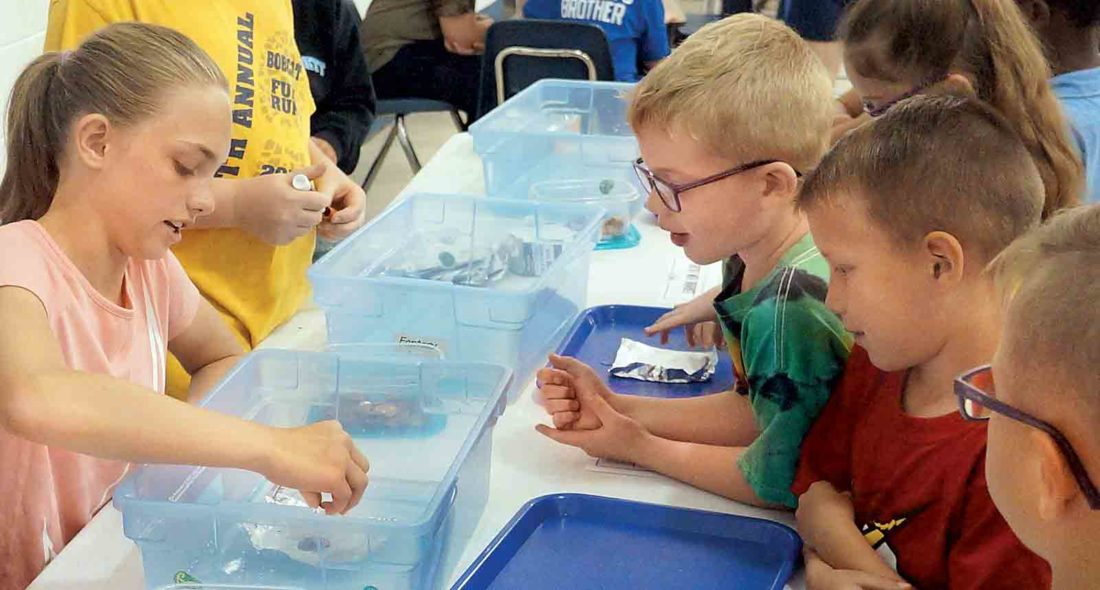Elementary class students are naturally curious about exploring new things. They possess a lot of excitement about wondrous science concepts. Therefore, black-boards and typical lecture methods aren’t adequate to teach this mysterious subject.
Instead of spoon-feeding the concepts and facts, you should emphasize more on the practical methods to let them observe the processes in reality. Below are some of the tips you can use in the classrooms to help your kids learn Science better-
Incorporate Hands-On Learning Methods
It is one of the best teaching methods that focus on the active participation of students to understand scientific concepts. You can use a low-cost apparatus in the classrooms to help students with a better learning experience.
For example, a telephone string can be used to teach about sound and communication. A matchstick meccano can be used to show 3D structures. A notched pencil can be used to explain the concept of rotations and revolutions. The ideas are endless! These simple teaching techniques create a spark of amazement and wonder that make your students curious about discovering something new.
Use Word Games And Word Part Strategy
Another creative way to make your elementary science class lively is to use word games. It will help the students to understand and memorize difficult scientific words better. Scrabble, Bingo, Pictionary, Hangman, Odd One Out, etc. are some of the common games that can be used to play with the scientific terms.
While introducing the new scientific terms, you can reinforce the word structures. What this means is, you can ask your students to identify and understand the prefix, suffix, base word, and relate their meanings. For example, take the word ‘photosynthesis.’ Split it into three parts-photo (light), synth (make), and sis (process). This strategy will help your weak students to grasp things easily.
Tell The Little Ones That They Are Scientists
Provide little ones with adequate materials and let them experiment themselves whenever it involves the use of safe substances. For example, vinegar and baking soda experiment. Allow them to see a specimen through a magnifying glass, and gather information. You can ask questions about their observations.
Further, if you are going to teach about birds, explain that a scientist who performs the study of bird is called an ‘ornithologist.’ Tell today they will be ornithologists. By allowing the students to feel like scientists, you may be helping them to promote a lifelong interest in Science.
Reward Their Discovery
Being an elementary science teacher, make sure to guide, support, and inspire your students to discover the wonders of science. Rewarding them for their small discoveries and efforts, letting them share their experience in the class will boost their confidence. They will put more efforts to discover things next time.
Ask Them To Be Creative With Their Notebooks
Interactive notebook to teach first to fourth-grade students is fun! It is an advanced version of lecture notes in which students communicate. The students get an opportunity to express the information they learned in the form of templates.
They can be creative with their notebooks by using charts, pictures, comments, etc. Later, they can use it as a resource for future references. Further, it will make them an independent thinker and writer.
Encourage Peer-To-Peer Teaching
In a peer-to-peer teaching approach, students take the role of teaching each other. This exciting strategy keeps them engaged in the content. They will discuss different scientific topics, generate questions, and work in teams to explore new information.
Since the kids share a similar discourse, this method will allow them to understand better. Also, they feel open and more comfortable while interacting in a group. And, they will learn better when they take the role of a teacher! So, all the students are at an advantage.
Conclusion
Just because the elementary class students are young, it doesn’t mean that they can’t understand ‘real’ science. Besides worksheets and lectures, these simple, practical ideas can help your kids to learn things better.
